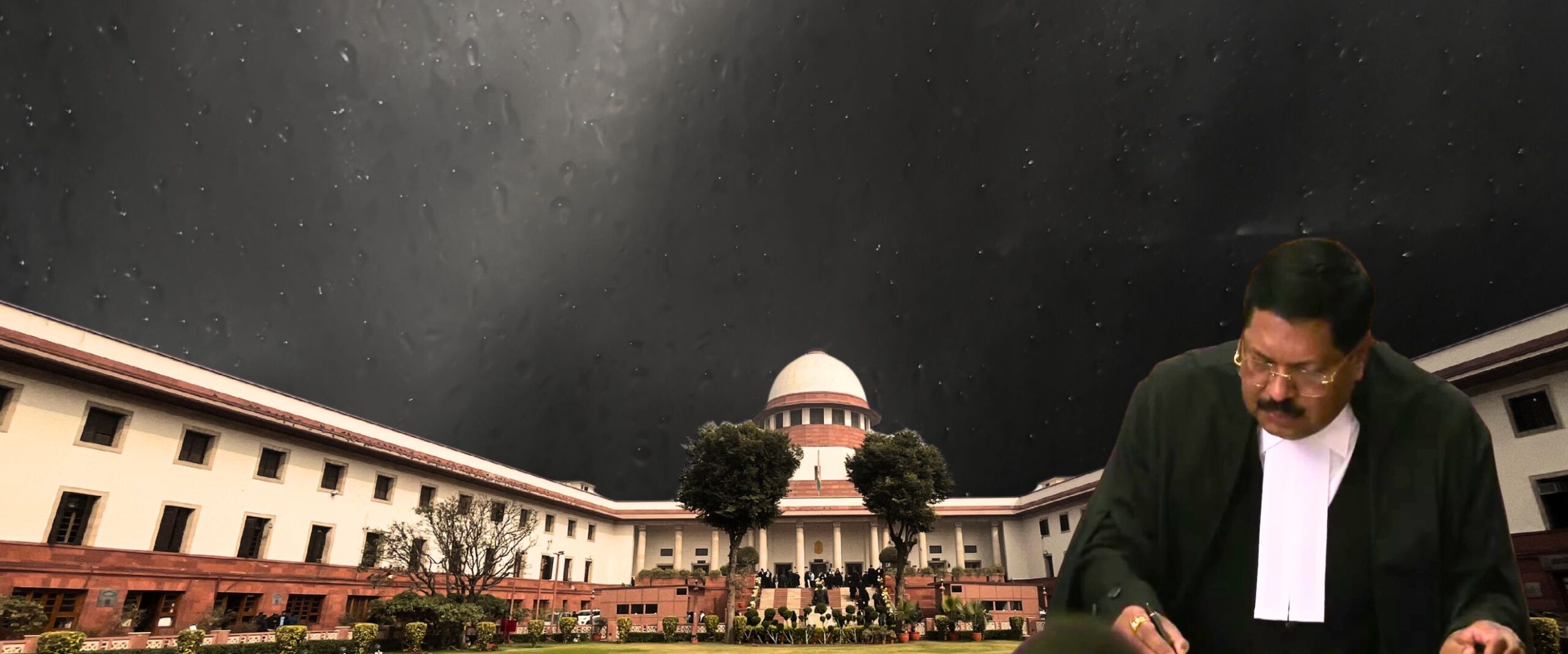Analysis
More than a pea in the shoe
The CJI and the Supreme Court appear unbothered, but there is something a bit more sinister about this week’s shoe-hurling incident

An extraordinary incident occurred in Court Number 1 of the Supreme Court earlier this week. An advocate named Rakesh Kishore hurled a shoe at Chief Justice B.R. Gavai. Reportedly, Kishore was heard stating “Sanatan Dharam ka apmaan nahi sahega Hindustan” (India will not tolerate disrespect towards Sanatan Dharma).
Condemnation flooded my X feed as soon as the news broke out. The chatter suggested that CJI Gavai remained calm while Court security apprehended Kishore. Reportedly, he asked the lawyer before him to continue his submissions and not get distracted by what just happened.
While CJI Gavai’s reaction was viewed as commendable and in step with the “mighty broad shoulders” of the Court, several observers have noted that the attack was provoked by CJI Gavai’s caste identity. The hurling of a shoe at a Dalit in his place of work while remarking on Sanatana Dharma—which, in the popular imagination, is rooted in Brahmanical practice—cannot be seen in a vacuum.
Much that has occurred since has reinforced this reading of the outrageous attack. Social media trolls, while expressing support for Kishore, posted AI-generated videos of the Chief with a blue face and an earthen pot, a reference to the casteist belief that the saliva of a Dalit was not meant to touch the ground. Kishore himself later apologised to Justice K.V. Chandran, who was sitting next to CJI Gavai, while remarking that the shoe was only meant for the Chief.
Members of the Dalit community organised a protest outside Kishore’s house. There were calls seeking action under the Scheduled Castes and Scheduled Tribes (Prevention of Atrocities) Act, 1989. Kishore, who has given a spate of interviews to the media, had an evasive response when presented with this allegation. To The Hindu on Thursday, he said he, too, was Dalit. To the Hindustan Times, on Tuesday, he remarked: “My name is Dr Rakesh Kishore. Can someone tell my caste? Maybe I am a Dalit too.”
Showing no remorse for the act, he stated that he’d been provoked by CJI Gavai’s recent oral remarks in a plea seeking the restoration of a Lord Vishnu idol in the Khajuraho complex. While dismissing the plea, the CJI had asked the petitioner to “go ask the deity to do something.” “The almighty was asking me every night how I could rest after such an insult,” Kishore told the police. In an interview, he claimed that his attack was a response to CJI Gavai’s comments on “bulldozer actions”.
The CJI has described it as a “forgotten chapter”. There has been no official word from the Court, which suggests that the institution will not be pressing charges. In a previous newsletter, my colleague Gauri Kashyap had referenced the verdict in P. Shiv Shankar (1988), where the Bench stated that a judge must “not be hypersensitive even where distortions and criticisms overstep the limits.” Judges have often stated that they are not bothered by criticism, especially on social media.
But this absurd incident should ideally have led to a deeper introspection on the “dignity and authority” of the Court. Article 129 of the Constitution grants the Court power to punish for contempt, while Article 142 lends it the authority to determine the specifics of a censure. There’s also the Contempt of Courts Act, 1971, which defines criminal contempt as that which “scandalises… or tends to lower the authority” of a court.
It’s not the first time the Court has witnessed a physical assault against a sitting judge. In 2009, a woman hurled a slipper at Justice Arijit Pasayat, while others in her company launched an “offensive diatribe” against the Bench. Justice Pasayat had ordered three months of imprisonment for the individuals and referred the matter to a larger Bench, which upheld the conviction for contempt and imposed a fine of Rs 1 lakh each.
This precedent may back a contempt action against Kishore, who has been debarred by the Bar Council of India and whose membership has been revoked by the Supreme Court Bar Association. Letting this incident slide may send the wrong message, considering the casteist undertones of the attack and the obvious glee Kishore is deriving from the media attention. The incident has all the elements of the kind of insidious impunity that is gaining currency in the public life of the republic. Will the lack of censure embolden those who seek to sow seeds of discord?
This article was first featured in SCO’s Weekly newsletter. Sign up now!